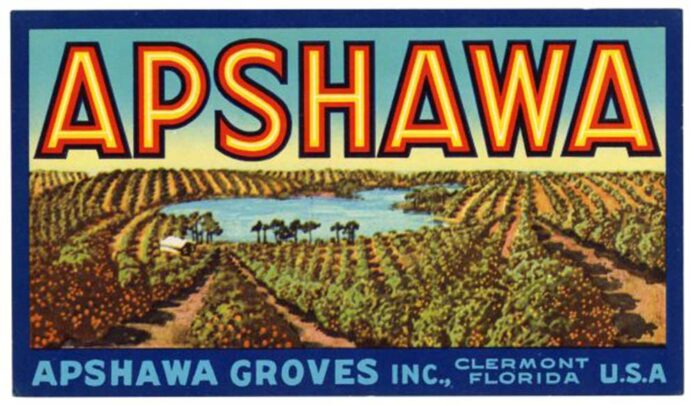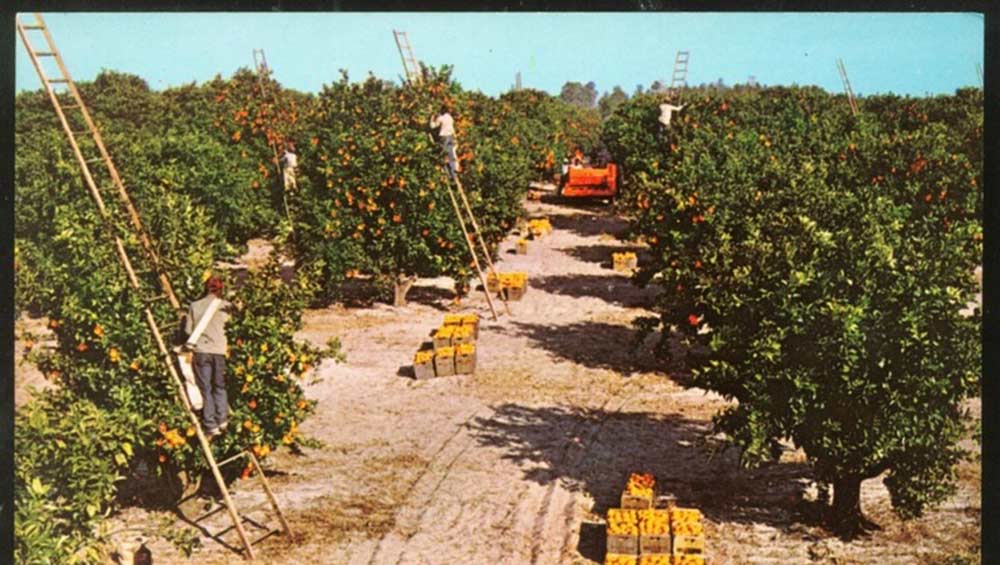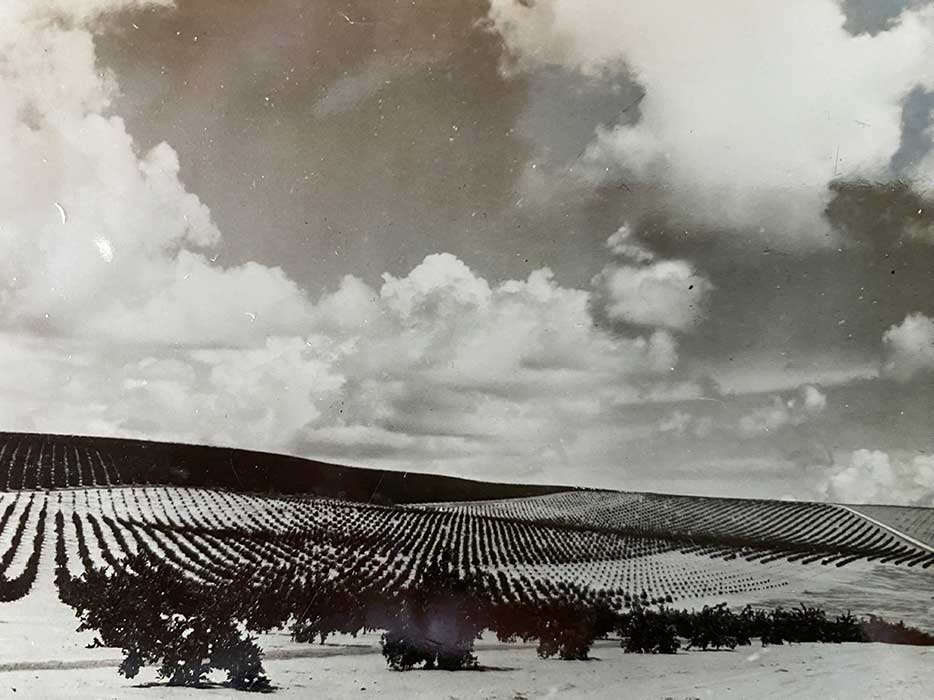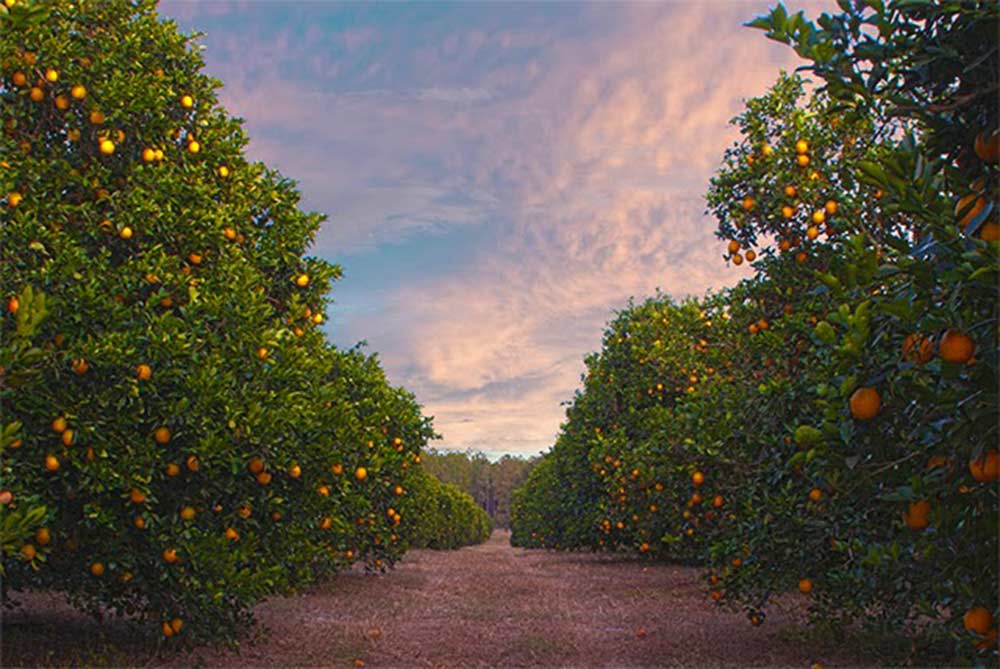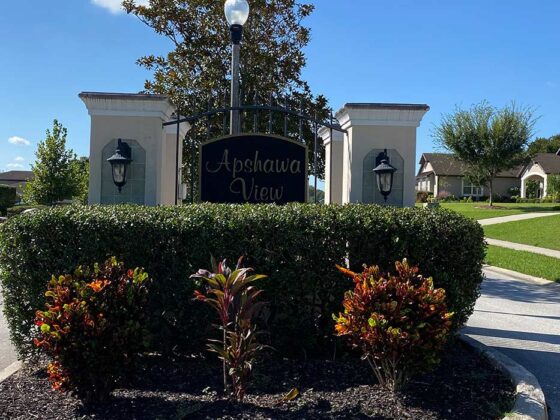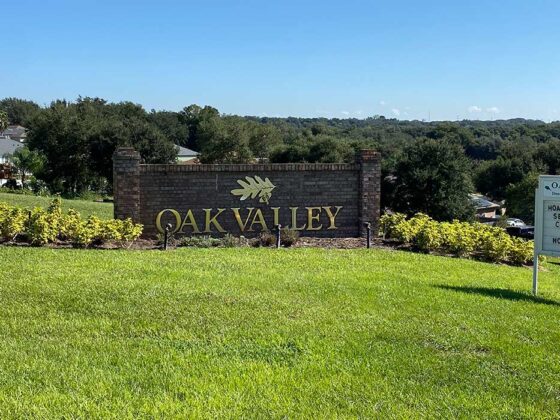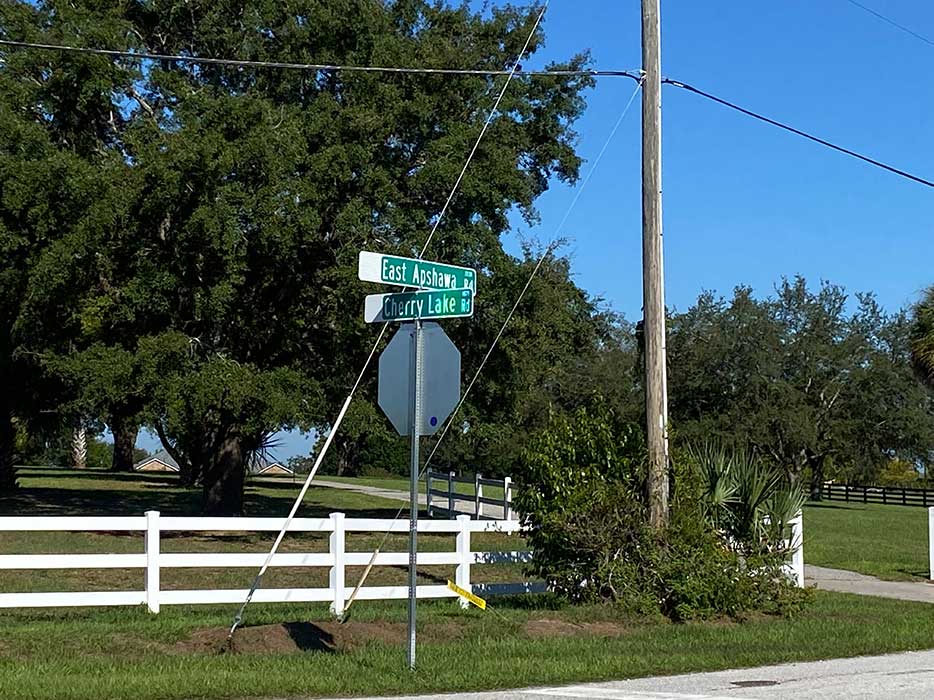by Chuck Seaver, South Lake Tablet
Before subdivisions and homestead places began to occupy the rolling hills of the Apshawa area in north Minneola, a rich part of Lake County’s citrus industry played a role for nearly 70 years. A dream come true for a business adventurist would include employment opportunities for local citizens who were still suffering from the effects of the Great Depression and nutritional assistance to the United States military.
An idea was born in 1926 to purchase approximately 500 acres of wooded property in an area north of Lake Minneola and West of US-27. The property was purchased for $1,250.00 an acre from the owner, William Jones Howey. Howey was not only the founder and mayor of Howey-In-the-Hills but was also a large grove owner in central Florida and owned large tracts of citrus groves throughout Florida. R.C. Cory, a native of New Jersey and the purchaser of the property would eventually have the business “Apshawa Groves, Inc.,” incorporated in 1934. Cory served the corporation as vice president with a board of trustees consisting of twelve area business owners. The term Apshawa was derived from a Native American language and was also the name of Cory’s home neighborhood near West Milford, New Jersey.
Apshawa Groves had a large percentage of its groves planted with grapefruit. Most of the acreage had the trees spaced 30 feet by 30 feet, giving them only 48 trees per acre. This was a common practice at the time for grapefruit trees that were planted in the sandy soils of central Florida. The trees were not irrigated at the time and required lots of room for an extensive root system. Almost all of the citrus trees grown in the area at the time consisted of scion, the top part of the tree, and rootstock, known as the root system.
Doc Hussman was proud of all his citrus, but he was especially proud of the grapefruit grown in the Apshawa Groves. For many years, University of Florida Doctor and Citrus Horticulture Professor Louis Ziegler would bring his classes to visit Dr. Hussman and learn about growing and marketing citrus.
The local economy, including citrus growers, was still recovering from the Great Depression when the United States entered the World War II theatre. Concerns of nutritional problems discovered during World War I still haunted the military decision-makers. Of particular concern was the risk of scurvy, a severe vitamin C deficiency that can lead to anemia, bleeding, swelling and even death. It was a common problem throughout the history of warfare, especially among sailors who had little access to fruits and vegetables.
Plans were quickly put into place to supply as much fresh citrus to the troops as possible. Unfortunately, those plans were met with challenges including the ability to keep fruit fresh and how to store it while in transit. The idea was born to juice the citrus and seal the juice in cans, similar to the military’s “meals ready to eat,” better known as MREs. The plan required the additional planting of citrus groves throughout the state. The United States military provided German prisoners of war to areas such as Zellwood and Lake Wales to mass produce the citrus juice in processing plants that were quickly built to meet the need. The plan worked so well during the war that Florida surpassed California in citrus production.
Many areas of the Florida economy, including the citrus industry, directly benefitted from the war effort in big ways. According to historians of the history of the Apshawa Groves, “Growers still remember the fat fruit checks they received during this period.” By 1945, Citizens Bank deposits hit $2,000,000 – quite a change from the depression figure of $2,000.
For the most part, life and profits were good for the Apshawa Grove family well into the 1950s. But by 1957, two severe cold snaps less than a month apart damaged fruits throughout the region. Local temperatures of 27 in December and 24 in early January froze oranges still on trees. Although cold weather and frost were not unusual for the area during the winter months, the temperatures and longevity of cold rarely hit temperatures low enough to damage the fruit. In fact, many growers felt that a short dip into the 30s sweetened the fruit.
But the next several decades would eventually provide the accumulative and final blow to the citrus industry, including Apshawa Groves. A January freeze in 1977 brought a dusting of snow as far south as Fort Pierce and Miami. Temperatures in the Lake County area sank into the 20s once again. In 1983 and 1985, another destructive freeze sent many citrus growers to the point of no return. It was the last straw for some who were just beginning to realize solid profits after the 1977 freeze. This began the land use change that is still unfolding today.
Life was not easy for the growers who chose to remain firm in their citrus growing efforts after the 1985 freeze. Prior loans and other financial obligations remained in place while the task of replanting again required funds that simply were not available for some growers. A few survived and vowed to try again. Juice and processing plants remained in place and there seemed to be a little bit of light at the end of the tunnel. Then the unthinkable happened again during the Christmas holidays of 1989. The Clermont area, including the Apshawa Groves, endured a hard freeze from December 22-26 that killed not only the young trees but the mature trees that were finally producing again. On Christmas Eve, temperatures dropped even further to 19 degrees and remained at 21 degrees throughout Christmas Day.
NOW…
For most growers, this was the final blow. Many grove owners were forced to sell their property to cover financial losses and pay taxes. Developers eagerly jumped in to buy up the distressed land. What few growers remained, soon realized that their properties were more valuable as development opportunities than it was for citrus production. Apshawa Groves was no exception to the harsh reality that Central Florida’s landscape was about to change in a way that most locals and natives of the area could not have envisioned.
Although much of the area grove properties have become a sea of rooftops and traffic congestion, the once pristine land and rolling hills of Apshawa Groves retain some of its original southern charm with large acreage homesteads and mini ranch-style pastureland. East and West Apshawa Roads, which once were clay and sand, are now paved with asphalt and are the main arteries for the subtle subdivisions that dot the hilly terrain. Cherry Lake Road still winds around the small but plentiful handful of lakes that once provided irrigation sources for Doc Husmann’s prized grapefruit and other citrus groves. Wilson Lake Parkway, once a “sugar-sand” trail that was only navigable with a four-wheel drive vehicle, provides a paved shortcut between Cherry Lake Road and US-27. Libby Number 3 Road still travels to Obrien Road and still gives way with a horseshoe curve around the little unnamed pond at Homestead Drive.
The citrus trailers and “fruit goats” that once lined the clay roads during picking season have all faded away. The generations of families that once cared for the rolling hills and citrus trees have moved on from the sweet smell of orange blossoms that they once called home. One can only wonder if Mr. Cory and Doc Husmann ever imagined that the precious land that holds a treasure trove of history would someday be transformed into the land use that it has become today.
Central Florida has a deep history of citrus and vegetable farming that many people in the area are unfamiliar with. Visit ClermontHistoricVillage.org and MyLakeLibrary.org for more information relating to the early days of farming in Clermont and the surrounding area.


